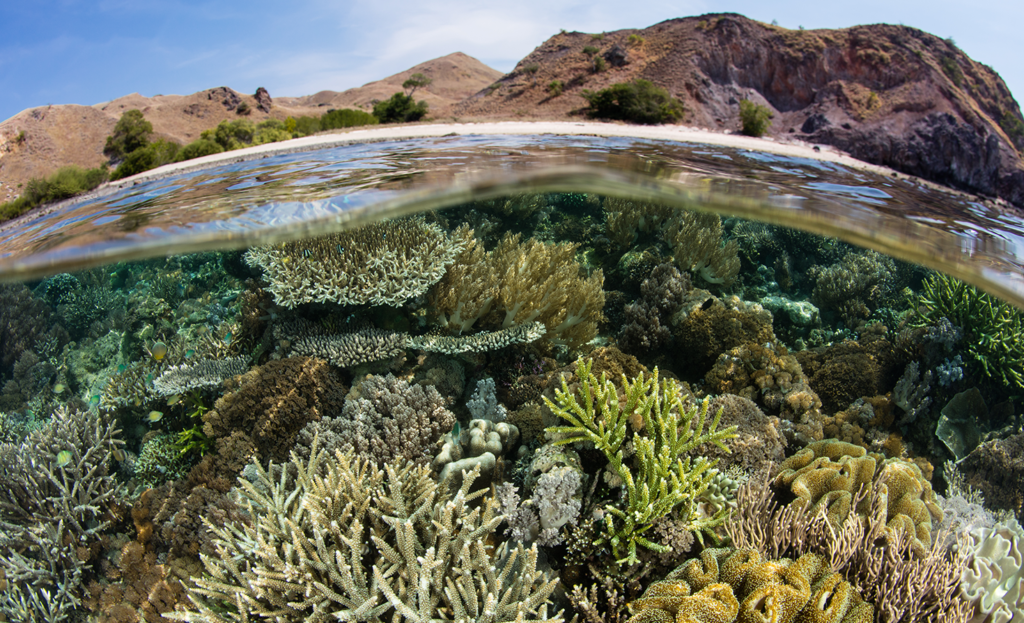The Kunming-Montreal Global Biodiversity Framework promises to end the decline in nature, but can it really catalyze the transformation in business models that is required?

On the same day as diplomats in Montreal celebrated the adoption of a historic new global treaty to end the decline in nature, a study published in the U.K. revealed how populations of earthworms are estimated to have fallen by a third in the past 25 years. It followed a separate study last week that revealed how bug “splats” on cars have fallen 64 percent in 17 years. The juxtaposition between the geopolitics of the global stage and the health of a handful of soil, of the warm words on “nature recovery” and the reality of wildlife populations in freefall, serves to underscore both the immense importance of the new Kunming-Montreal Global Biodiversity Framework and the huge challenge it faces.
Going in to the repeatedly delayed COP15 Biodiversity Summit the talk was of the need to deliver a “Paris Agreement for nature” — a genuinely historic, headline-grabbing moment and sweeping new global accord that could catalyze the action needed to reverse biodiversity loss by the end of the decade. Did the Kunming-Montreal Global Biodiversity Framework deliver on that promise? The answer is yes, and no.
The first thing to note is that you could argue the Paris Agreement is not a particularly compelling template to want to follow. Seven years on from its adoption global emissions are still rising, climate funding targets have been routinely missed, and the last U.N. climate summit ended in a messy compromise that did little to advance global decarbonization efforts. However, its defenders would argue the Paris Agreement did provide an overarching goal — “well below” 2 degrees Celsius of warming in pursuit of less than 1.5C — that helped establish net zero emissions as the defining economic and industrial project of the age.
At the same time, it delivered a loose geopolitical framework that has ratcheted up pressure on governments, businesses and investors to steadily strengthen their decarbonization efforts. There are credible reasons to think global emissions will peak in the next few years and that net zero by 2050 can still be achieved. Ahead of the Paris Summit, both those scenarios felt depressingly implausible.
Have the past 2 weeks in Montreal delivered a similarly historic turning point with regard to humanity’s relationship with nature?
Have the past two weeks in Montreal delivered a similarly historic turning point with regard to humanity’s relationship with nature?
It is far too early to tell, but there are some reasons for cautious optimism.
Firstly, the commitment to protect 30 percent of land, freshwater, and ocean by 2030 so as to “put nature on a pathway to recovery” by 2030 offers a refreshingly clear overarching target akin to the 1.5C temperature goal contained in the Paris Agreement. Like the Paris accord, the new treaty may not provide huge detail on precisely how its principal goal should be met, but a lot of logical conclusions flow from its adoption.
Moreover, the new framework does provide some important pointers on how to work towards the targets. There’s a $30 billion funding commitment from government and a goal to mobilize $200 billion for nature protection and recovery from public and private sources annually by 2030. There’s a clear commitment to “eliminate, phase out or reform” harmful subsidies, reducing them by at least $500 billion a year — a move that promises to have huge implications for nature-trashing agri-businesses and extractive industries.
There’s also a welcome formal recognition of the critical role of indigenous communities in advancing nature protection.
And there’s a somewhat vaguer promise to “encourage and enable” businesses to assess the nature-related risks and impacts they face, which should result in at least some jurisdictions enhancing corporate disclosure and supply chain management rules. There’s also a welcome formal recognition of the critical role of indigenous communities in advancing nature protection.
Like the Paris Agreement, this all adds up to a pretty sizeable market signal for governments, investors and businesses globally. It strongly suggests significant legislative and policy measures will be enacted over the coming years to help reverse the decline in nature. The treaty may have lacked the more demanding and specific targets and mandatory reporting requirements many NGOs and green-minded businesses wanted to see, but the direction of travel is still obvious.
As Unilever CEO Alain Jope observed: “The message to the private sector is clear: businesses around the world and from all sectors will need to take large-scale action now to halt and reverse nature loss by 2030. The Global Biodiversity Framework is set to provide the political certainty that all large businesses and financial institutions will be required to assess and disclose risks and impacts on nature. The result will be stronger accountability and better-informed decisions by investors, governments, consumers and businesses themselves.”
This is an encouraging interpretation and the hope is that there are plenty of other business leaders who, like Jope, have been paying close attention to what happened in Montreal. The problem is that there is plenty of evidence to suggest that is simply not the case.
The result will be stronger accountability and better-informed decisions by investors, governments, consumers and businesses themselves.
The Kunming-Montreal Global Biodiversity Framework differs from the Paris Agreement in several important ways. The first is that the market signal it is trying to send has not been amplified in the same way. The media coverage of events at COP15 was decidedly muted. It has not been helped by the simultaneous staging of the first winter World Cup, but the harsh truth is that international negotiations to try and maintain a habitable biosphere have made very little impression on newsrooms globally.
In fairness, journalists are not entirely to blame for this omerta. Most governments have invested very little time and energy in promoting what happened in Montreal or explaining the implications of the accord they have just signed up to.
Secondly, the new treaty lacks the crucial “ratchet mechanism” that was one of the most important components of the Paris Agreement. One of the big criticisms of the climate treaty was that it was not legally binding and as such there was no way to force countries to deliver on their emissions goals. But the Paris Agreement was never entirely toothless. The requirement for countries to revisit their national climate strategies and report on their progress every five years creates a system of escalating peer pressure and competitive tensions that ensures progress is maintained even when some countries renege on their commitments. Ambition continued to ratchet upwards even as President Donald Trump threw a hissy fit and quit the accord.
There is no such mechanism in the Kunming-Montreal deal and as such there is no formal process to try and crank up pressure on governments to take more action if it looks as if the 2030 targets are to be missed. The previous set of Aichi Targets were badly missed and nothing happened. There is every reason to think much the same thing could happen again.
There is no such mechanism in the Kunming-Montreal deal and as such there is no formal process to try and crank up pressure on governments to take more action.
Which brings us to the most worrying aspect of the new agreement. How practically will it be translated into policies, legislation, projects and innovations on the ground that can genuinely reverse biodiversity loss and restore to health the ecosystem services that underpin the global economy and are critical to stabilizing the climate?
The Paris Agreement established an implicit target to deliver the largest and fastest industrial revolution in human history to build a net zero-emission global economy within four to five decades. But even at the time of its agreement, the deal was working with the grain of economic thinking, technological development, and emerging business models. It has since become increasingly clear that net zero emissions can be achieved through the deployment of technologies that will cut costs and boost prosperity and well-being for all. It is a hugely complex challenge that requires the marginalization of immensely powerful vested interests, but there is a policy playbook to follow and evidence that the technologies that are needed do work.
The challenge COP15 is wrestling with is more complicated still. How does an expanding economy driven by rightly non-negotiable development requirements, still built on linear production models and dominated by consumer-based business models return huge swathes of land and sea back to nature? How does it layer nature positivity on top of net zero emissions?
There is fascinating work going on in the worlds of regenerative agriculture, farming subsidy reform, rewilding, nature-based carbon markets, alternative proteins and the circular economy to try to answer these questions. But these various emerging models are nowhere near advanced enough and as they do try to scale up, they run into political barriers that are arguably even more daunting than those faced by the cleantech sector.
The U.K. government provides a case in point. In Montreal, it played an admirable role lobbying for the 30×30 target and making the economic case for nature protection. At home it has had a target in place to reverse biodiversity loss for years, and yet all the while the worms and bugs have kept dying. Attempts to reform farming subsidies, tighten planning rules, tackle sewage spills or adopt more ambitious environmental targets have all been stymied by budgetary concerns and political opposition. That is why campaigners were so desperate for the COP15 deal to include clearer targets and mandatory policy measures to ensure governments translated their overarching commitment to protect nature into practice and actually started to tackle unsustainable production models and consumption patterns.
Campaigners were so desperate for the COP15 deal to include clearer targets and mandatory policy measures.
It is also why such proposals were ultimately blocked by governments who understood that such clauses would require significant domestic reforms in the face of likely opposition from powerful industries.
What then, can be done? The only route forward for those businesses that recognize nature restoration is critical to long-term economic stability and prosperity is to try to turn the Kunming-Montreal Global Biodiversity Framework into “a Paris Agreement for nature” after the event.
That means amplifying the signal that the world has agreed to reverse nature decline by 2030 and governments will have to enact significant new policies and reforms to ensure that target is honored. It means demonstrating that it is possible to hand land and seas back to nature without compromising food security or undermining economic development. Most of all, it means huge new investment in the innovations and business models that can enable the circular resource flows and alternative sources of protein that could yet make the goals agreed in Montreal achievable. The nascent effort to create nature-friendly business models at scale needs to emulate the success and excitement of the clean tech industries that are helping to entrench political support for the net zero transition.
One of the few pieces of good environmental news in recent years has been provided by the speed with which natural habitats and ecosystem services can recover when they given the space to rewild. The worms and the bugs can come again, if only we let them. The challenge is getting political and business leaders, and indeed all of us, to recognize the immense importance of the biosphere around us. The hope is that the Kunming-Montreal Global Biodiversity Framework can help enable that realization. But if it is to do so, businesses and governments now need to ignore the lack of detailed targets and instead deliver on its promise.
Source: https://www.greenbiz.com/article/cop15-paris-agreement-nature

